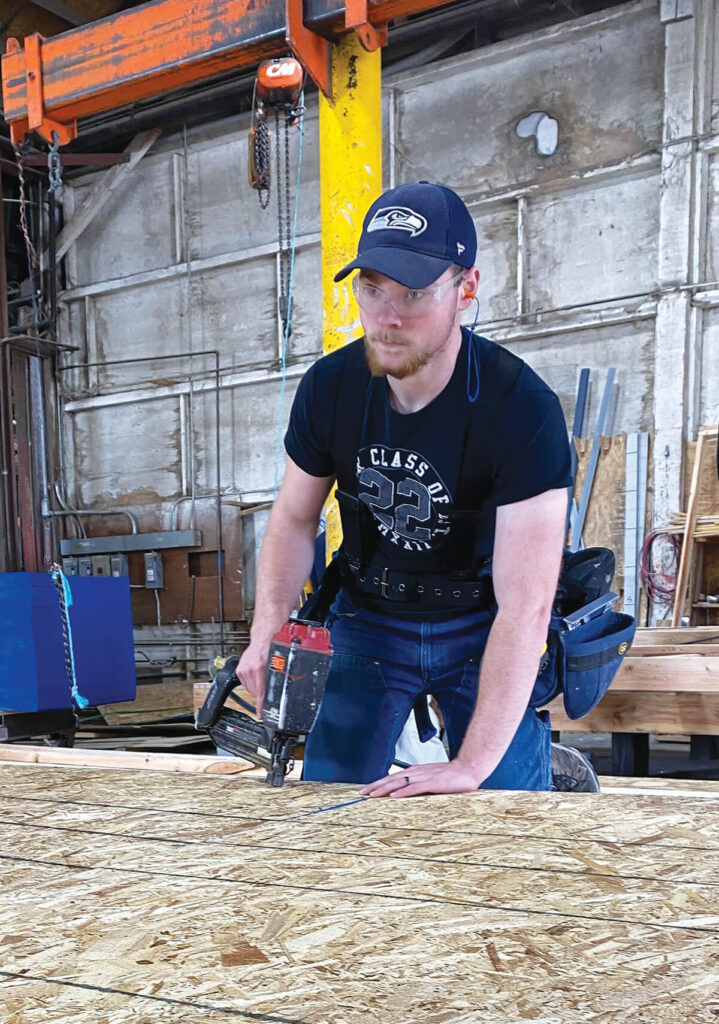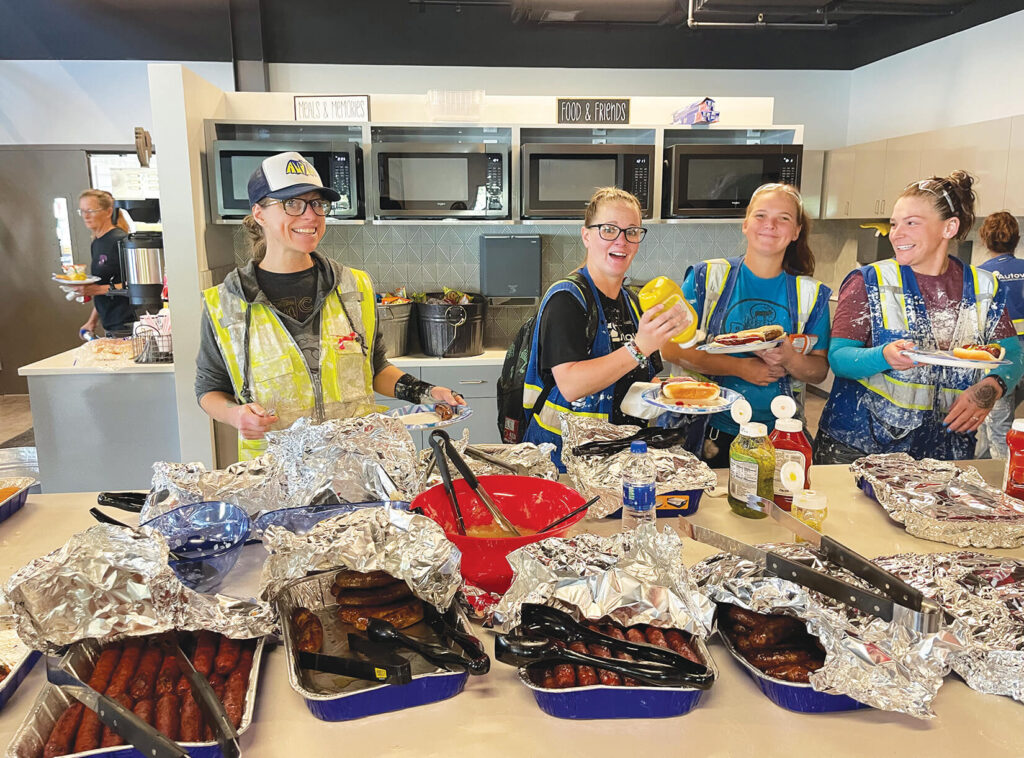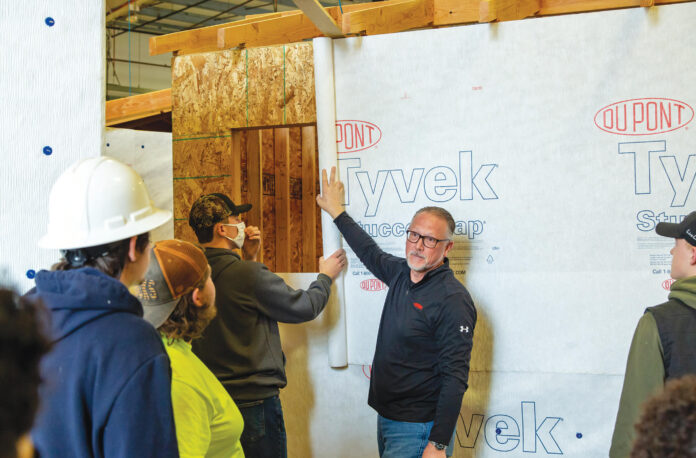The offsite industry is in a great position to help solve the labor conundrum
- Career and Technical programs across the country are directing high school students to trades that include offsite construction
- These hands-on programs can be a hard sell at first, but once students tour an offsite factory they tend to become enthusiastic
- Regulations allow minors to work in factories if that work is part of an educational program and if they are properly supervised
- Don’t discount older people. Hiring retirees on a part-time basis to mentor young people can be a smart business move
As an industry, we can all agree that we want reliable, hard-working people to join our companies. But is that really all we want in an employee?
Our labor challenges did not appear out of thin air—they have been building for years and we need to work together to find solutions. It’s going to take a long-term commitment from all stakeholders and we may have to change the way we have traditionally thought about hiring and retaining employees.

Exposure to Modular Construction is Key
One complaint I consistently hear is that the pool of potential employees is too small. There aren’t enough people to hire, let alone choose from. If this is true, then doesn’t it make sense to start taking action to make that pool bigger?
Momentum Innovation Group (MIG), an innovation consulting firm that helps clients drive transformation in their business and find unseen areas of opportunity and growth, recently polled almost 500 5th-8th grade students to find out how they make decisions about careers.
- Almost 37% said they began thinking about their future career before the 5th grade
- More than 50% know someone who has a job they have considered doing in the future
- Only 28% have ever thought about a career in construction
MIG also polled 1300 high school students, 73% of whom said they had never heard the terms “modular construction” or “offsite construction.”
Many of us got into the industry because we had a parent, relative or friend in the business. Maybe we took a shop class. But how does someone even begin to explore a career they know nothing about and to which they have no connection?
We need to start finding ways to expose kids to offsite construction at a much younger age.
Working With Schools
Schools are an important part of the solution simply because it’s where the young people are. And while the shop classes that many of us took in high school or middle school are almost extinct, some successful programs around the country are exposing more kids to the construction industry.
In Philadelphia, Evin Jarrett is in his second year of teaching construction trades to 5th-8th graders. While some manufacturers are struggling to obtain approval for teenagers to work in their factories, he can allow students to use power tools and sweat pipes with torches through support from his school administration. He reports that some kids are even fixing leaky toilets in their own homes for their parents.
In South Carolina and Arkansas, traveling buses are being used to expose students in 5th grade and older to various trades (construction and other) through interactive games and virtual reality (VR). In South Carolina alone, over 30,000 students have engaged with the buses in the last three years.
Career and Technical Education (CTE) programs are proving they can help provide exposure and training to students interested in varying areas of construction. Although CTE programs work a little differently in each state, the basic approach is that they offer hands-on training in trade and vocational topics including cosmetology, nursing, automotive, machining, welding, culinary, fire service, criminal justice and construction trades, to name just a few. To participate in a CTE program, students must keep a certain grade point average and have consistent attendance.
In Everett, Washington the Sno-Isle TECH Skills Center uses a lottery system for admission because they consistently receive 1700 applications for the 1100 available spots. Director Wes Allen says their Advanced Manufacturing program is initially the most difficult class to sell to kids, but that, after an in-person tour of the classroom and training area, most become enthusiastic. Math, English and science are integrated into the classes.
This year, the Construction Trades program has about 25 participants.

CTEC student working at Modern Building systems.
The Career Technical Education Center (CTEC) in Salem, Oregon serves the second-largest school district in their area. Soft skills such as communication, leadership, work ethic and problem-solving are part of the program and also taught in a hands-on way—students lead tours of the Center explaining to visitors about the classes offered, what they learn and what their plans are after high school.
CTEC was started by a local developer who put up millions of dollars of his own money to get the program started. It is now being run by the local Chamber of Commerce.
CTEC is a great example of how private-public partnerships can be really successful. They will be one of Momentum Innovation Group’s educational partners in a Workforce Development pilot that will run in 2023, which will allow students to do hands-on training at a local modular construction factory, Modern Building Systems.
Alan Rasmussen, VP of Manufacturing at Modern Building Systems, has been working closely with CTEC for some time now and regularly encourages kids to work in his factory to gain a larger understanding of modular construction and construction as a whole.
“I tell kids if they want to become an architect or an engineer they should come work in my factory—even if it’s just for a summer—because it will make them a better architect or engineer,” says Rasmussen. For example, Rasmussen met a student at CTEC who was incredibly passionate about becoming a code official. By working at Modern Building Systems, she was able to gain a greater understanding of the entire modular process and eventually was greeting inspectors at the factory and running them through the review process.
Rasmussen is also utilizing the Code of Federal Regulations Title 29 CFR 570.50(c) student-learner program that allows students who are 16 and 17 years of age to work in his factory. The regulation requires that the work must be tied to a trade class offering a “course of study” and be “under close supervision,” which works really well in a factory setting. Students are treated as an employee (factories should be prepared to pay worker’s compensation insurance) and the only other requirement is a simple written agreement between the factory and the school.
Company Culture, Automation, and the Power of Generations
At Autovol in Boise, Idaho, an energetic Merrick Macomber is in charge of employee happiness and makes company culture her priority. Autovol has budgeted $165,000 this year for activities designed to celebrate employees, their families and the work they do.
Employees, or “Solutioneers” as they are called at Autovol, are hired through a rigorous 3-part interview process that begins with their COO, Frank Emmerich, and Macomber, who asks out-of-the-box interview questions to get to the heart of who someone really is. The process then moves to a team of Supervisors and hourly Solutioneers a new hire would be engaging with and ends with CEO Rick Murdock.

Autovol Solutioneers reap the benefits of a company-provided meal.
“I want to discover someone’s personality by asking them questions no one asks in interviews. Do you believe in the Sasquatch? Tell me what’s on your bucket list,” says Macomber. “[Rick] interviews every single person that enters our doors because he wants to know who is working for him. [He wants to know] who you are. What are your dreams? Where do you want to go with your life and how can we help you get there?”
Employees are expected to be problem-solvers, and Macomber says that approximately 70% of the ideas “Solutioneers” bring to management are tested in the factory.
Automation has been key to helping solve their labor challenges. When Murdock first decided to implement automation into the factory, it was to take the heavy lifting off of humans and put that work onto machines. That has expanded the labor pool by making it easier for women to enter the workforce; in fact 30% of the company’s “Solutioneers” are women.
Currently, Autovol utilizes about 30% automation in their manufacturing line (with a goal of 45%). They have a diversified workforce that includes skilled trades, manual laborers and technologists who program the robotics in the factory. They understand young people who have spent much of their time on video games are very well-suited for programming robots.
Retirees May be Your Secret Weapon
The US Bureau of Labor and Statistics’ 2021 Labor Force Statistics show that in the next eight to 10 years the construction industry could lose 2.5 million workers to retirement. And that group of laborers holds a lot of knowledge and skill. How could we continue to engage retirees who aren’t quite ready to throw in the towel, but also don’t want to be working full-time?
What if retirees were able to work part-time as trainers to help newer employees or people new to the industry learn and/or improve their skills? Maybe they could teach at the factory or work at a school or CTE program part-time imparting knowledge and skills to the younger generations.
Younger generations possess some very unique technology skill sets, but those skills need to be applied to career opportunities within the offsite industry. If you’re looking to implement some automation into your factory or want to expand and build additional factories, you’re likely going to need people who can teach those young people how to program robots and retirees could be a good source of that talent.
A Starting Point
Over the next 2+ years, I will be leading a program through Momentum Innovation Group (funded by the US Department of Energy’s Building Technologies Office through the Buildings Energy Efficiency Frontiers & Innovation Technologies program) focused on increasing exposure to construction careers, specifically offsite. In 2023, we will be working with three high schools and at least one middle school to expose students to modular construction methods and encourage hands-on training in our partner factories: Ritz-Craft in Mifflinburg, Pennsylvania; Signature Building Systems in Moosic, PA; and Modern Building Systems in Aumsville, Oregon.
Our goal is to create a solution that can be widely used throughout the country to help build these types of training partnerships that benefit the offsite industry and create school-to-work opportunities for young people.
“The immediate transition from school to work can be intimidating for some young graduates,” says Meagan Carpenter-Dial, co-founder of Dial Ventures, LLC, a North Carolina-based consultancy working with MIG and focused on workforce and curriculum development. “With earlier exposure and exploration, factories and schools can blend learning with workforce development and expand the mental catalog of work for the next generation of workers.”
Email [email protected] to share anything you’re doing in your own business that has demonstrated positive results for workforce development in the offsite space.






